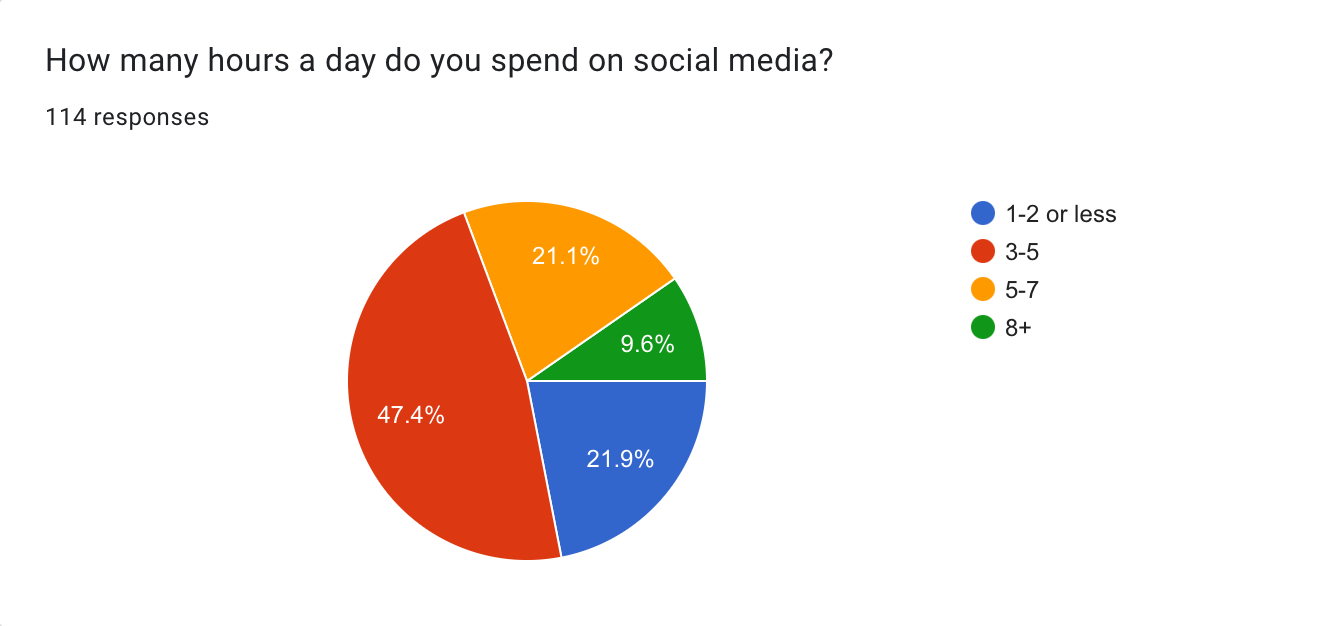Social media is extremely popular in today’s society, especially among teens. With over 95 percent of teens ages 13 to 17 years having access to a cell phone and 90 percent active on social media according to Pew Research Center, it is without a doubt essential in today’s society, especially in the younger generation. Social media provides easy and wireless communication between people within seconds. It can serve as a source of entertainment as well, but there may also be some underlying negative effects that not all teens see.
“I would say social media certainly affects me,” said Norwin High School senior Anthony Olshanski. “I use it for about 2 to 3 hours a day. It helps me connect with friends and find news where I can’t around other sources. Social Media keeps me updated on things and would say my favorite social media by far is YouTube.”
According to a poll taken by over 100 Norwin High School students, 57 percent answered that they use social media “very often.”
A recent Gallup report found that teenagers spend on average 8 hours and 39 minutes per day on screens, whereas pre-teen children spend 5 and a half hours. According to an article on news.gallup.com, across age groups, the average time spent on social media ranges from as low as 4.1 hours per day for 13-year-olds to as high as 5.8 hours per day for 17-year-olds. Girls spend nearly an hour more on social media than boys.
According to the poll, 22 percent of kids answered that they spend 1-2 hours or less on social media, 47 percent answered 3-5 hours, 21 percent answered 5-7 hours, and 10 percent answered 8+ hours.

According to a NY Times article, it’s important to consider what kids are not doing when they spend so much time on screens. “You worry if it’s replacing activities, like sleep, family time, reading, chores, any other activities that are positive for kids,” said Dr. Heitner in the NY Times article. “That’s definitely a real concern.”
There is no doubt that excessive use of social media could also be the cause of real mental health issues in teens. Adolescents who use social media more than three hours a day face twice the risk of experiencing poor mental health outcomes. Numerous studies have shown that higher levels of social media use among children and adolescents are linked to adverse effects including depression, anxiety, and even inadequate sleep, which can disrupt neurological development and lead to more serious issues. Social media can even be the cause of low self-esteem or poor body image.
According to the poll, over 70 percent of kids agreed that social media can have harmful effects on kids and 24 percent answered maybe.
A big change that could be related to these issues is the fact that with new technology, especially smartphones, kids are never really alone. They can update their status and share exactly what they’re doing at any given moment whether that be watching, listening to, or reading something. Kids can even install various apps that can let their friends know their specific location at all times. Because of constant connectivity, kids may feel too connected with one another constantly.
Indirect communication is something that is only happening more and more among kids and their peers. It is evident that kids are missing out on developing critical social skills more than ever. Texting and online communication put everyone in a position where things like body language, facial expressions, and even the smallest vocal reactions are rendered invisible. If kids depend on indirect communication too much, they are less likely to feel the need to interact face-to-face with each other.
With the influence of social media today, it is clear that platforms play an integral part in our lives. Social media grants quick and easy access, wireless communication, and other benefits, but could lead to harmful effects that teens are not always aware of.









